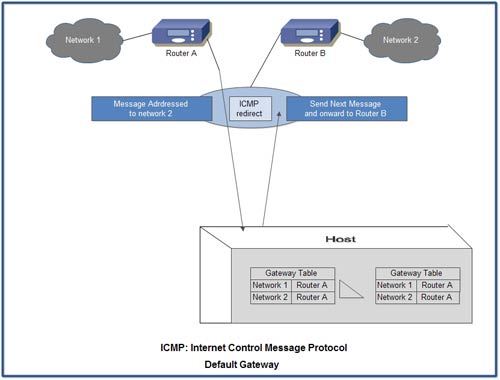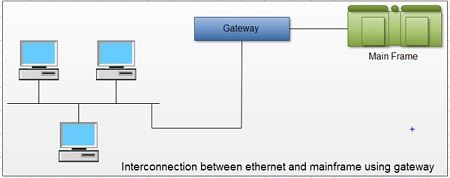The gateways are used to connect two networks that do not communicate with the same network protocol, so it is necessary to translate these protocols between both networks. These are predecessors of router nowadays and are technology-wise more expensive and highly functional. They in general consist of software which resides in a host computer, such as mid-range or mainframe. For example, a gateway can use as a connection point between an IBM AS400 microcomputer and a LAN-based PC.
The gateways operate in the upper layers of the OSI model, the transport, session, presentation, and application layers (layers 4, 5, 6, and 7). They are usually made up of a computer that runs the appropriate input software capable of converting the data between the two different computing environments. In our example gateway between an IBM AS400 microcomputer and the PC LAN, the gateway computer runs Windows NT Server with a special conversion package installed.
We’ll be covering the following topics in this tutorial:
Email gateways
Another fairly widespread use of gateways is to serve as a translator between different email standards. For example, a gateway can be used to act as an intermediary between the Lotus Notes Mail Server and a Microsoft Exchange server (an email server).
The gateways usually located in high-speed main segments, such as FDDI networks, where they connect a central or microcomputer system with LAN networks, which, in turn, are connected to the main FDDI segment through routers. Although gateways are required to connect networks that need data conversion, they can slow down network traffic (especially data traffic that occurs between the two networks connected by the gateway). And since, typically, the gateways connect very different systems, their configuration can be relatively more complicated than that of other interconnection devices.
The gateways provide the connection point between high-speed backbones and mainframe and mini-computers.
Characteristics of Gateways
- Gateways provide full protocol conversion from one proprietary LAN technology to another, i.e. Ethernet to token ring or FDDI or any other standard or protocol rather than encapsulation
- It uses higher layers of the OSI model, perhaps through layer 7, the application layer. IBM SNA, DECnet, Internet TCP/IP and other protocols can be converted from network-to-network
- Unlike bridges and routers, gateways operate slowly because of protocol conversion. Consequently, they may create bottlenecks of congestion during periods of peak usage.
Default Gateway
Default gateway consists of manually registering router IP addresses in the host. This method is simple; and is the most frequently used. Note however, that if two or more routers are connected to the same subnet, the network administrator must determine which of these routers the message should be sent to. To solve this problem, a message called ICMP redirect is available. Default gateway checks the destination host address in the received message. If it determines that the message should be sent via other router, it will send back a redirect message that includes the IP address of the selected router, to the source host. When the source host receives this message, it stores the destination host address as well as the second router address so that it can send messages addressed to this host via the second router.
 [/vc_column_text][/vc_column][/vc_row]
[/vc_column_text][/vc_column][/vc_row]


 Dinesh Thakur holds an B.C.A, MCDBA, MCSD certifications. Dinesh authors the hugely popular
Dinesh Thakur holds an B.C.A, MCDBA, MCSD certifications. Dinesh authors the hugely popular